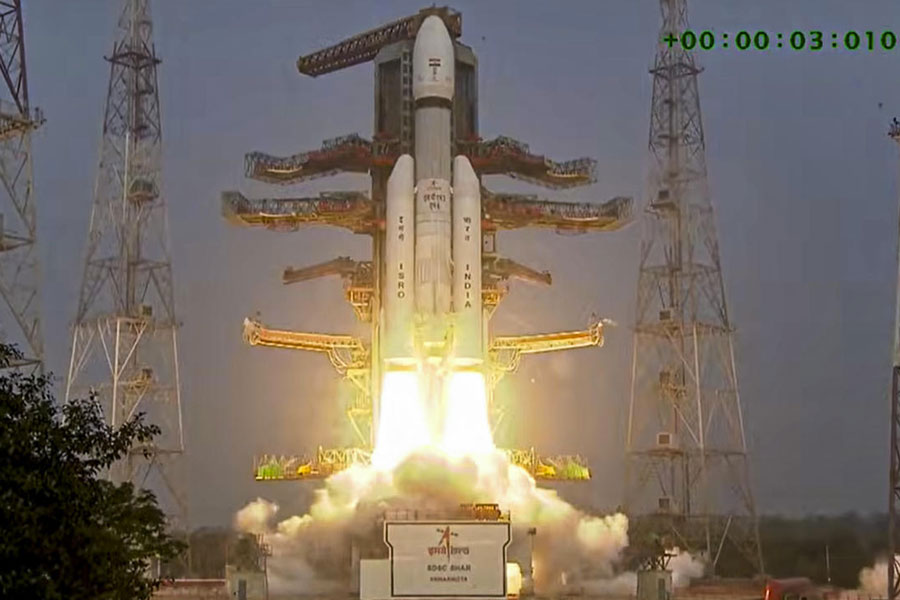 |
| Artist’s impression of a black hole and a jet spewed from its vicinity. Picture credit: Nasa/JPL |
New Delhi, Aug. 26: A chapter in Indrani Banerjee’s PhD thesis might turn out to be a gift for the world’s astronomers studying black holes, the hungry corpses of massive stars that have exhausted their nuclear fires and collapsed.
Banerjee, a research scholar at the Indian Institute of Science (IISc), Bangalore, and her supervisor Banibrata Mukhopadhyay have found a way to reliably predict the spin of black holes, a measure of their rotational speeds, and a tool to explore these exotic and mysterious objects.
The two astrophysicists have discovered an association between the mass and the spin of black holes — the larger the mass, the faster the rotational speed and higher the spin. The numerical values of both — mass and spin — are critical in efforts to understand the neighbourhood of black holes and the life history of their progenitor stars.
Black holes are the remnants of massive stars that have burnt all their nuclear fuel and collapsed under their own gravity into objects with such strong gravitational fields that they gobble up any nearby matter — not even light can escape from them.
While astronomers can easily determine the masses of black holes through observations, efforts to determine their spins have generated ambiguous results.
 |
| Real radio image of jets from a black hole. Picture credit: R Perley and W Cotton, NRAO/NSF |
Now Mukhopadhyay and Banerjee have shown that the mass and the spin are interdependent — given the mass, the spin can be computed. Their research work has appeared in the international journal Physical Review Letters.
“The intense gravity of the black hole combined with its spin drags space and time in its immediate neighbourhood,” said Mukhopadhyay, associate professor at the IISc’s department of physics. “The spin can explain the powerful jets of electromagnetic radiation and matter spewed from the vicinity of black holes.”
Astrophysicists believe that as black holes emerge from progenitor stars that were rotating, they too would have some rotational speeds. But because black holes are not directly visible, their rotation cannot be determined through telescopic observations.
“The value of the spin and how fast the black hole is eating up matter around it can also give us information about its progenitor star,” said Banerjee, who graduated from Calcutta’s Presidency College before moving to the IISc for an integrated PhD programme.
Banerjee, who says she was gripped by the idea of matter disappearing forever into black holes while still in college, is pursuing a PhD on the synthesis of different heavy elements in the region of high temperature and high density around a black hole. The higher the spin, the greater is the temperature in the region which influences the process of element synthesis.
 |
| Indrani Banerjee and Banibrata Mukhopadhyay at the Indian Institute of Science, Bangalore |
“The mass-spin relation is significant — we need a good handle on spin,” said Naresh Dadich, a senior astronomer at the InterUniversity Centre for Astronomy and Astrophysics, Pune, who was not associated with the IISc research, but has himself earlier worked on events in the neighbourhood of black holes.
“It could help improve our understanding of the mechanisms that power quasars, the highly energetic nuclei of galaxies with supermassive black holes in their cores,” Dadich added.
The IISc researchers established the mass-spin association through theoretical ideas but relying on studies of several supernovae — the spectacular collapse of massive stars into black holes — observed by independent astronomers over the past 15 years.










